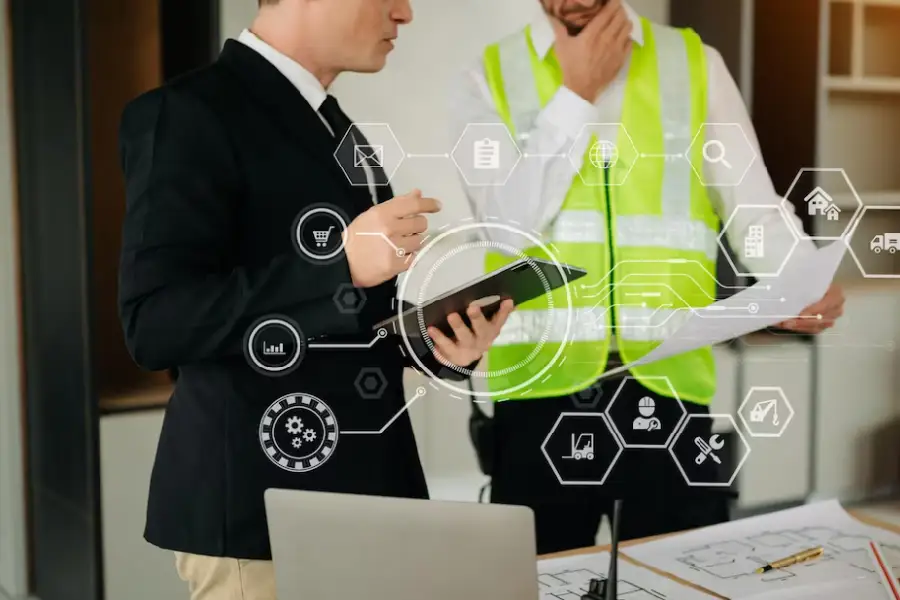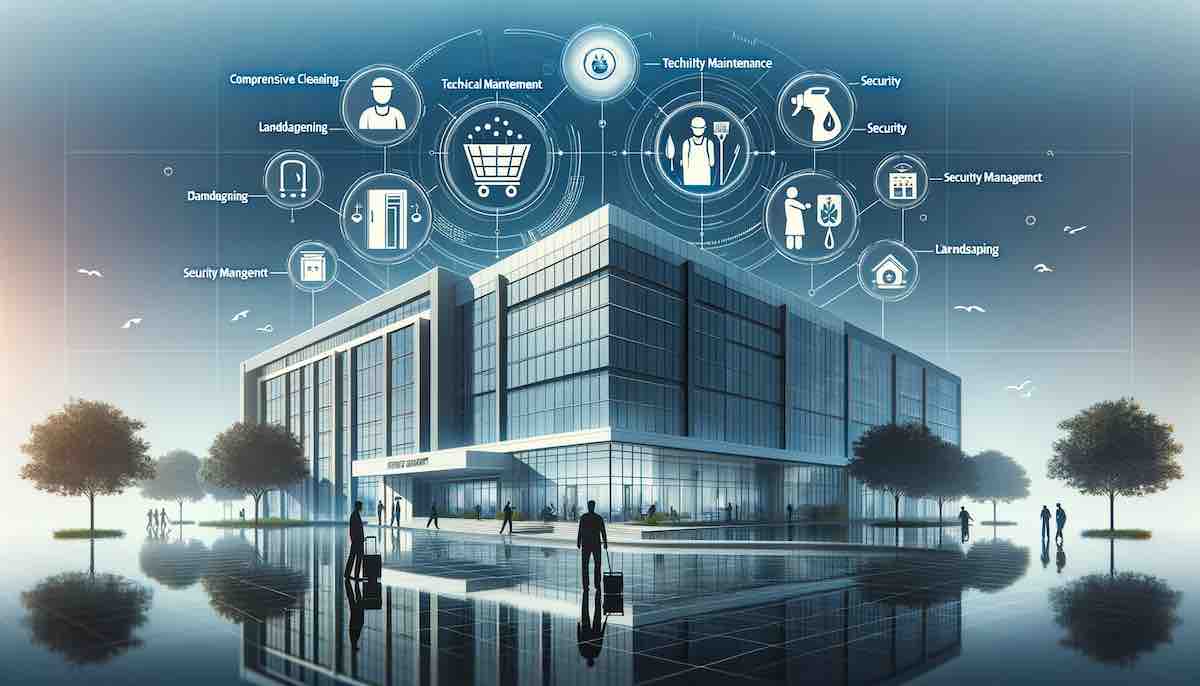Finest Practices for Streamlining Facility Management Processes and Protocols
Finest Practices for Streamlining Facility Management Processes and Protocols
Blog Article
Maximize Efficiency and Safety And Security: Ideal Practices in Center Monitoring
In today's quickly evolving landscape, maximizing effectiveness and safety in center monitoring has come to be a vital emphasis for organizations making every effort to enhance operational efficiency. By integrating wise technology, prioritizing upkeep protocols, and promoting a society of safety, facility supervisors can significantly enhance both performance and compliance.
Embrace Smart Innovation

Applying clever sensors and automation systems permits accurate tracking of ecological problems, tenancy degrees, and tools efficiency. This data-driven strategy not just educates decision-making but also supports predictive maintenance, minimizing downtime and extending asset life. Smart technology enhances user experience by creating flexible settings that react to the demands of passengers.
Incorporating wise platforms also advertises sustainability campaigns, such as energy-efficient lighting and heating and cooling systems, adding to reduced carbon footprints. By embracing these innovations, center supervisors can make sure that their operations remain competitive, resistant, and lined up with contemporary sustainability goals. Inevitably, the change towards smart technology stands for a transformative action in redefining facility monitoring for an extra lasting and effective future.
Prioritize Regular Upkeep
Routine maintenance is crucial for making certain the long life and effectiveness of facility procedures. A well-structured maintenance program not just prolongs the life of equipment and framework however also lowers the possibility of unexpected failings that can disrupt procedures. By prioritizing normal maintenance, facility supervisors can identify possible problems early, permitting timely treatments that lessen costly repair services and downtime.
Establishing a regular maintenance timetable is important. This need to include normal evaluations, maintenance, and required fixings for all equipment, cooling and heating systems, plumbing, and electric systems. Utilizing an electronic upkeep administration system (CMMS) can simplify this process, supplying tracking and notifies for upcoming upkeep tasks.
Additionally, cultivating a society of liability among staff boosts the effectiveness of upkeep initiatives. Training workers to report and recognize maintenance problems can bring about proactive administration as opposed to responsive reactions. Furthermore, documenting upkeep tasks guarantees compliance with safety and security laws and offers useful understandings for future preparation.
Implement Safety Training Programs
An extensive security training program is crucial for fostering a protected working atmosphere in any kind of center. Facility Management. Such programs outfit employees with the knowledge and skills required to determine dangers, apply safety and security methods, and react effectively in emergencies. By prioritizing safety training, organizations can considerably decrease the risk of injuries and mishaps, thus improving general efficiency
To execute an efficient safety training program, it is essential to tailor the content to the specific needs of the center and its procedures. This consists of conducting a detailed danger assessment to recognize potential hazards special to the workplace. Training should encompass a variety of subjects such as appropriate devices usage, emergency discharge treatments, and emergency treatment techniques.
Moreover, it is essential to involve workers actively throughout training sessions. Using real-life scenarios and hands-on demos can improve understanding and retention of safety practices. Normal refresher courses need to likewise be scheduled to maintain security awareness at the center.
Optimize Area Utilization
Reliable space application is an essential element of facility administration that straight impacts operational performance and cost-effectiveness. Organizations often fight with underutilized or jammed areas, leading to inefficiencies and boosted expenses. To enhance space use, facility supervisors should carry out regular evaluations to identify how areas are presently being made use of and where enhancements can be made.
Implementing versatile workspace styles, such as open workplace layouts or modular furnishings, can significantly improve adaptability to altering demands. Additionally, leveraging innovation, such as room management software application, can give valuable insights right into tenancy patterns and help determine underused locations.

Establish Clear Interaction Channels
Optimizing space usage commonly discloses the demand for durable interaction strategies within a facility. Clear communication channels are essential here for helping with efficient partnership among personnel, maintenance teams, and administration. By establishing these channels, center managers can ensure that information flows perfectly concerning space usage, operational changes, and safety methods.
Applying a multi-faceted interaction strategy-- incorporating electronic systems, such as emails and team collaboration devices, with in person communications-- can substantially improve engagement and information circulation. Normal meetings ought to be scheduled to discuss recurring tasks, address worries, and share updates. Furthermore, creating a central info hub, such as an intranet, allows staff members to gain access to essential documents and news quickly.
Furthermore, feedback devices are necessary to assess the effectiveness of interaction methods. Encouraging team to share their understandings can result in renovations and promote a culture of visibility. Training programs concentrated on communication skills can even more equip staff members to share information plainly and properly.
Ultimately, developing clear interaction networks not just optimizes efficiency click here yet also boosts safety by making certain that everyone is informed and lined up with the facility's functional objectives.

Verdict
To conclude, the integration of clever technology, normal maintenance, thorough safety training, maximized space application, and effective interaction channels collectively boosts effectiveness and safety and security in facility monitoring. By leveraging IoT and AI for real-time monitoring, companies can lower operational prices while ensuring conformity with safety and security policies. An aggressive approach to maintenance and training cultivates a safer workplace environment, eventually bring about improved efficiency and business success. These best practices work as essential elements for efficient center management.
In today's swiftly click here evolving landscape, making the most of effectiveness and security in center administration has ended up being an important emphasis for companies making every effort to boost functional efficiency. By incorporating wise innovation, prioritizing maintenance procedures, and promoting a culture of safety, facility managers can significantly improve both productivity and conformity.To execute an effective safety and security training program, it is essential to tailor the content to the specific demands of the center and its procedures. By developing these channels, facility supervisors can make certain that details streams perfectly concerning space use, functional modifications, and security protocols.
In conclusion, the assimilation of wise innovation, regular upkeep, detailed safety training, maximized room usage, and effective interaction channels collectively boosts effectiveness and safety in center administration. - Facility Management
Report this page